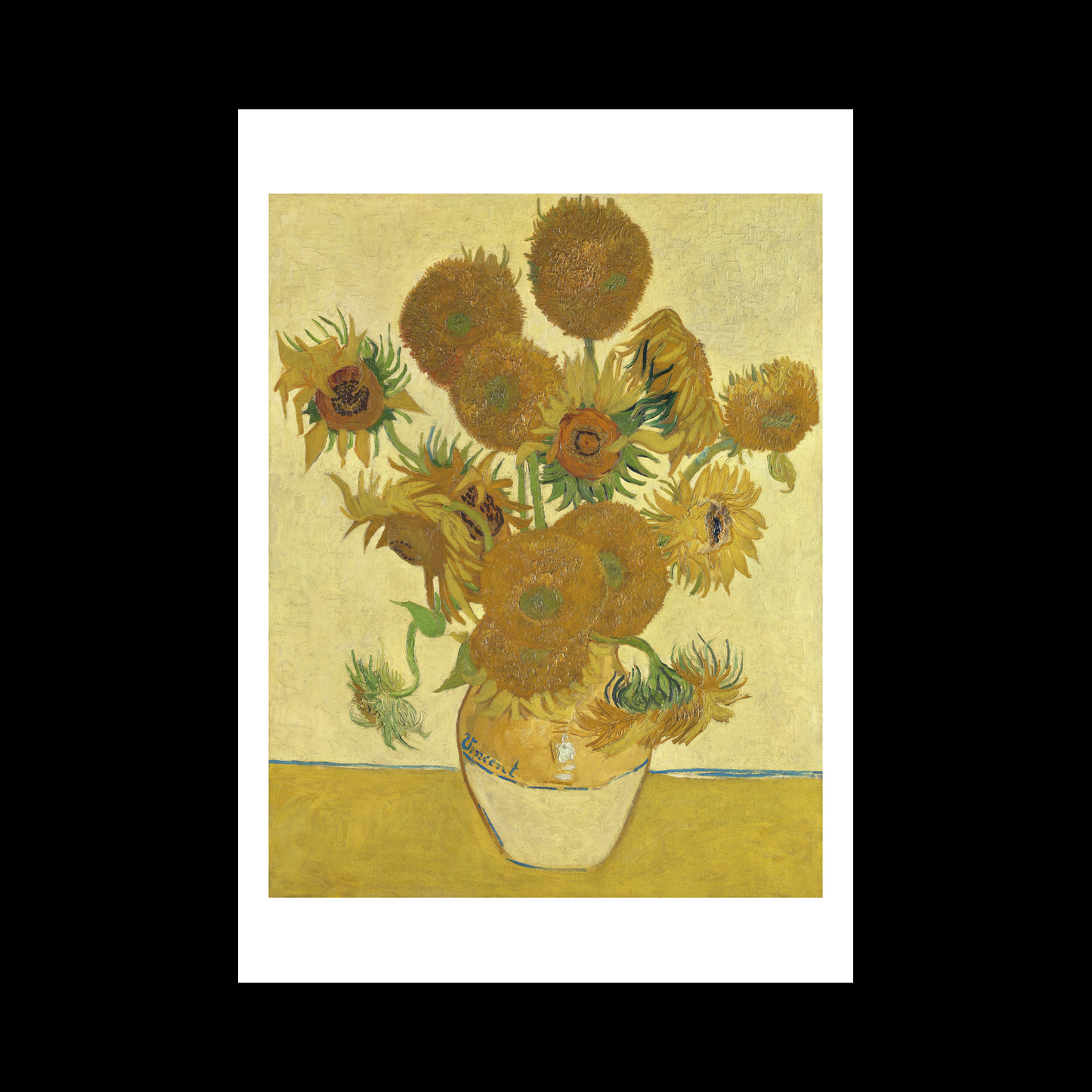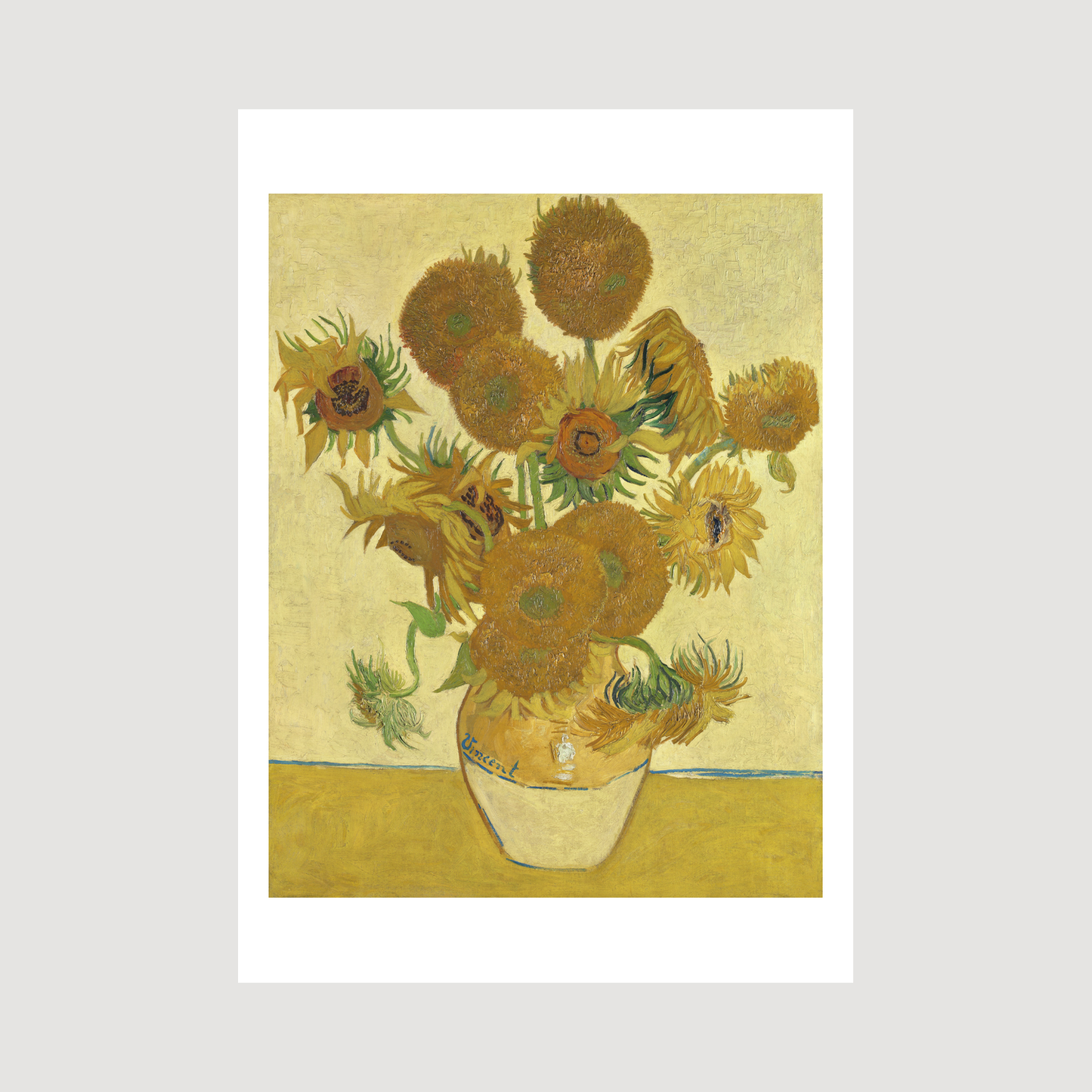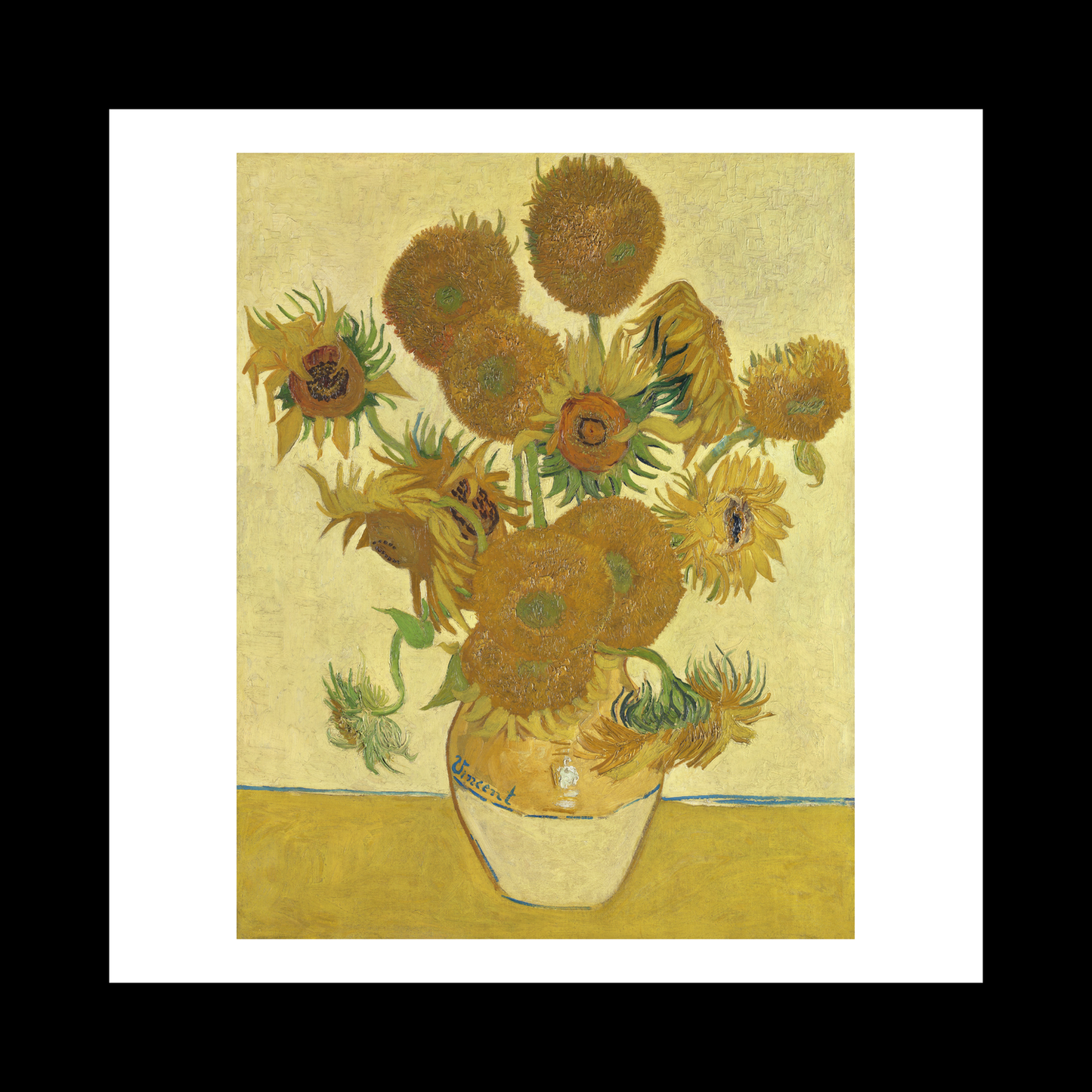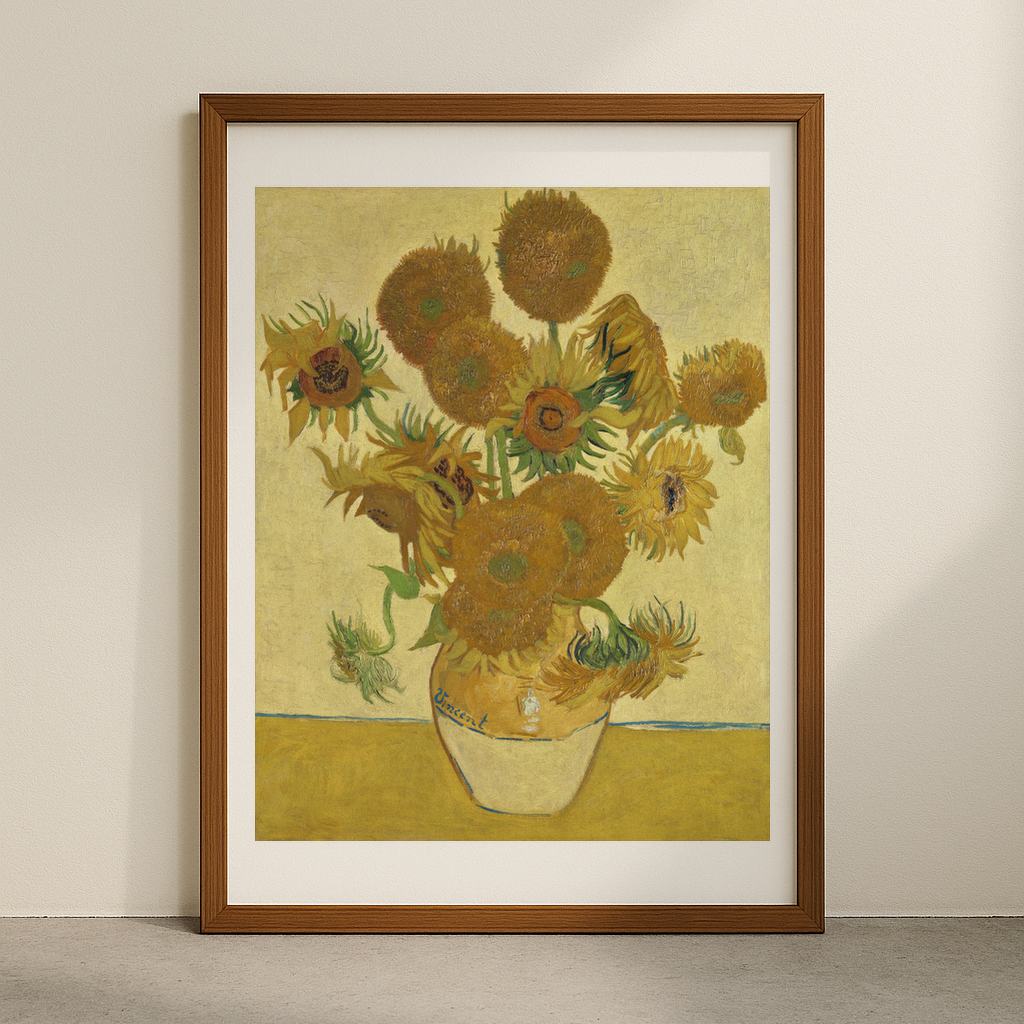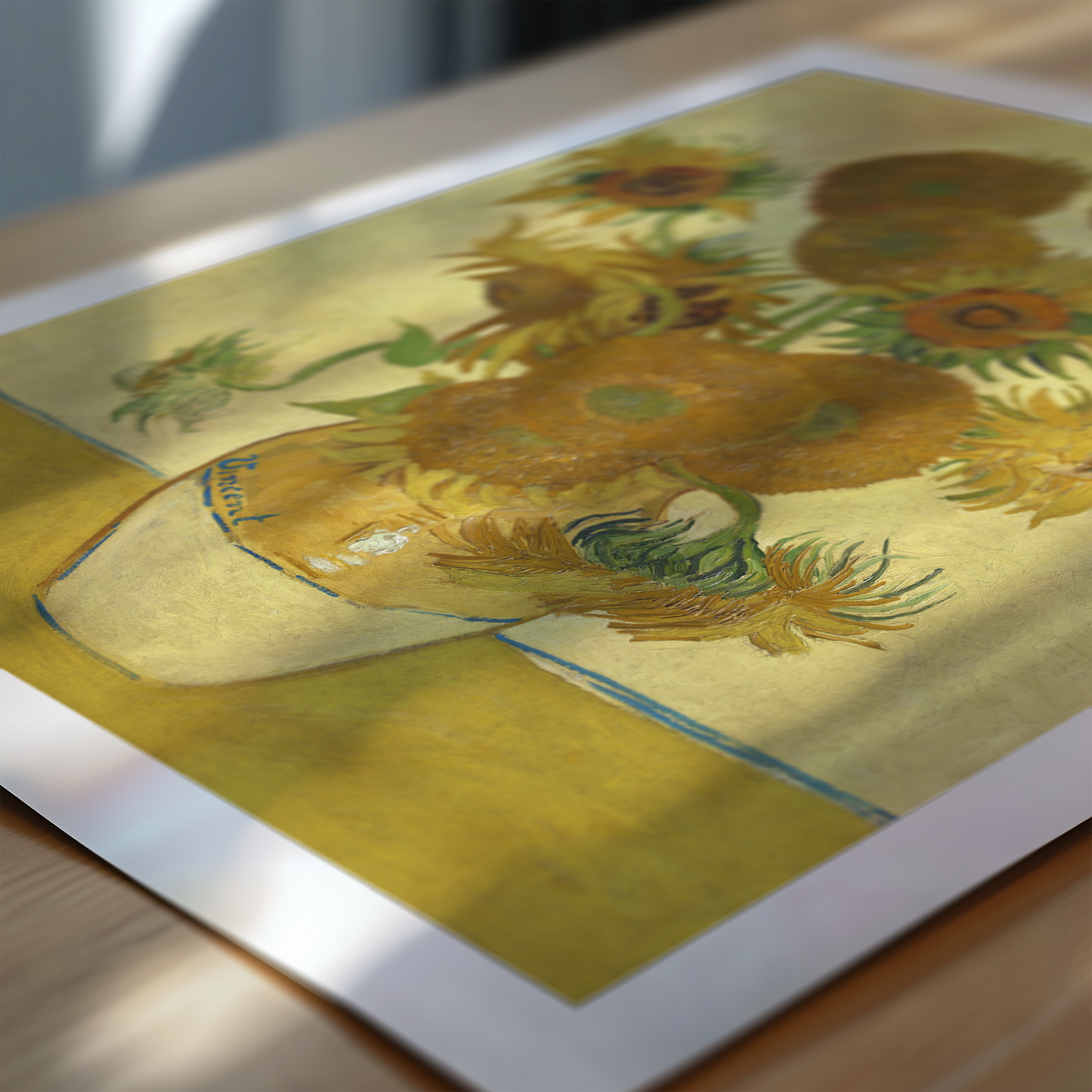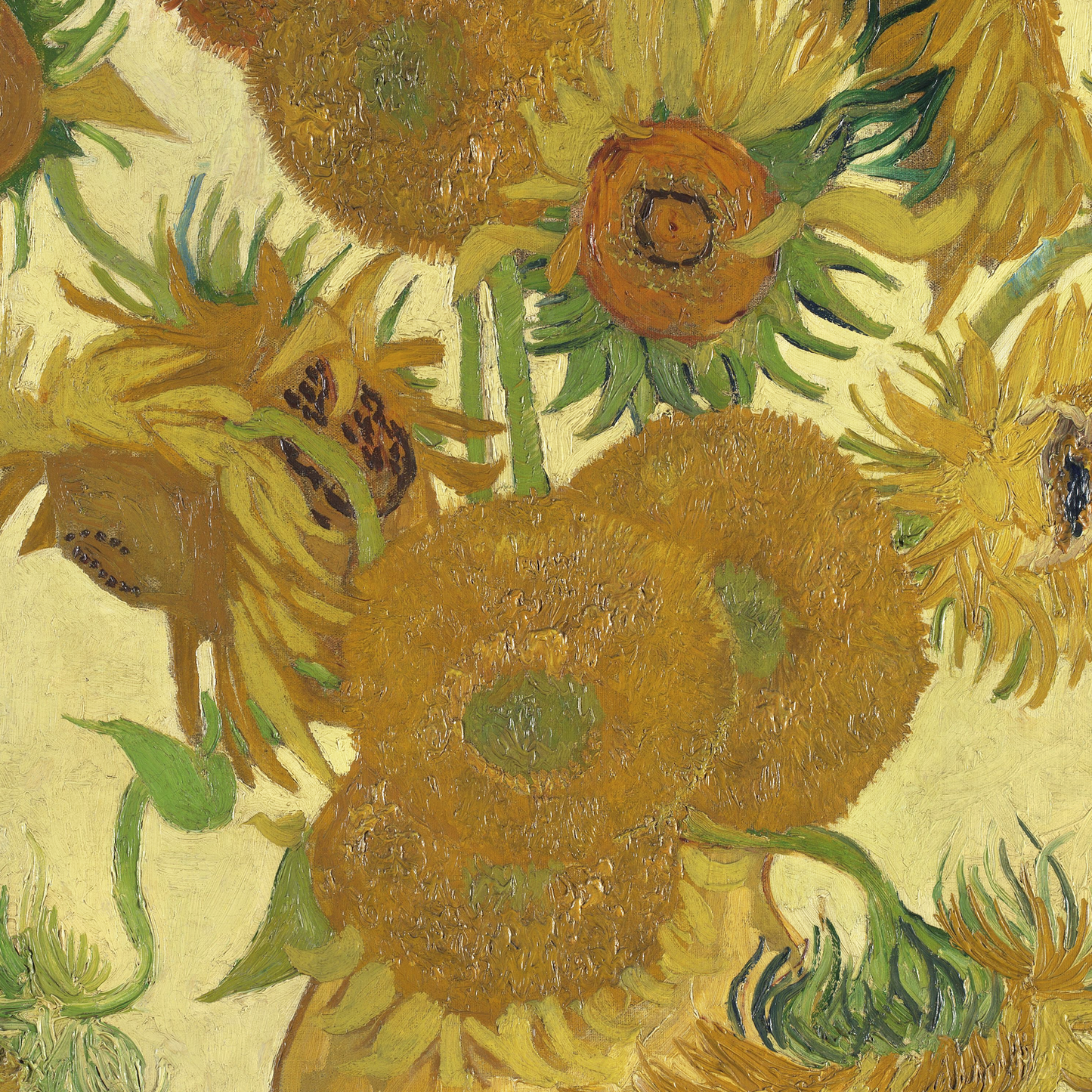1
/
of
6
Sunflowers (1888)
Sunflowers (1888)
Regular price
£12.45 GBP
Regular price
Sale price
£12.45 GBP
Taxes included.
Quantity
Couldn't load pickup availability
Vincent van Gogh's 'Sunflowers' (1888) stands as one of the artist's most beloved still life paintings, featuring vibrant yellow blooms arranged in a simple yellow vase against a yellow background. This bold monochromatic approach demonstrates van Gogh's revolutionary use of colour, particularly his mastery of various yellow hues, from pale lemon to deep ochre. The thick, impasto brushstrokes and expressive painting technique create a sense of movement and vitality, making the flowers appear almost alive on the canvas.
Created during van Gogh's time in Arles, France, this work was part of a series of sunflower paintings intended to decorate the room of his friend and fellow artist Paul Gauguin. The sunflowers, some fresh and others wilting, represent different stages of life - a theme that deeply resonated with van Gogh's own struggles and artistic vision. He chose sunflowers not only for their striking appearance but also because they symbolised gratitude in the language of flowers, reflecting his appreciation for friendship and nature.
The painting's emotional intensity emerges through van Gogh's unique artistic choices. He deliberately avoided using traditional still life techniques, instead opting for bold outlines and simplified forms. The flowers' faces turn in different directions, some looking directly at the viewer, others drooping or shown in profile, creating a dynamic composition that captures both the beauty and melancholy of these short-lived blooms. This work exemplifies van Gogh's ability to transform ordinary subjects into extraordinary expressions of human experience and natural beauty.
The piece reflects van Gogh's innovative approach to colour theory and his belief that colour could express emotion rather than merely represent reality. Working primarily with yellows, he created depth and variation through subtle tonal shifts and textural contrasts, demonstrating how a limited palette could achieve remarkable emotional and visual impact. This painting continues to resonate with viewers, offering a window into the artist's unique vision and his profound connection to the natural world.
View full details
Created during van Gogh's time in Arles, France, this work was part of a series of sunflower paintings intended to decorate the room of his friend and fellow artist Paul Gauguin. The sunflowers, some fresh and others wilting, represent different stages of life - a theme that deeply resonated with van Gogh's own struggles and artistic vision. He chose sunflowers not only for their striking appearance but also because they symbolised gratitude in the language of flowers, reflecting his appreciation for friendship and nature.
The painting's emotional intensity emerges through van Gogh's unique artistic choices. He deliberately avoided using traditional still life techniques, instead opting for bold outlines and simplified forms. The flowers' faces turn in different directions, some looking directly at the viewer, others drooping or shown in profile, creating a dynamic composition that captures both the beauty and melancholy of these short-lived blooms. This work exemplifies van Gogh's ability to transform ordinary subjects into extraordinary expressions of human experience and natural beauty.
The piece reflects van Gogh's innovative approach to colour theory and his belief that colour could express emotion rather than merely represent reality. Working primarily with yellows, he created depth and variation through subtle tonal shifts and textural contrasts, demonstrating how a limited palette could achieve remarkable emotional and visual impact. This painting continues to resonate with viewers, offering a window into the artist's unique vision and his profound connection to the natural world.
